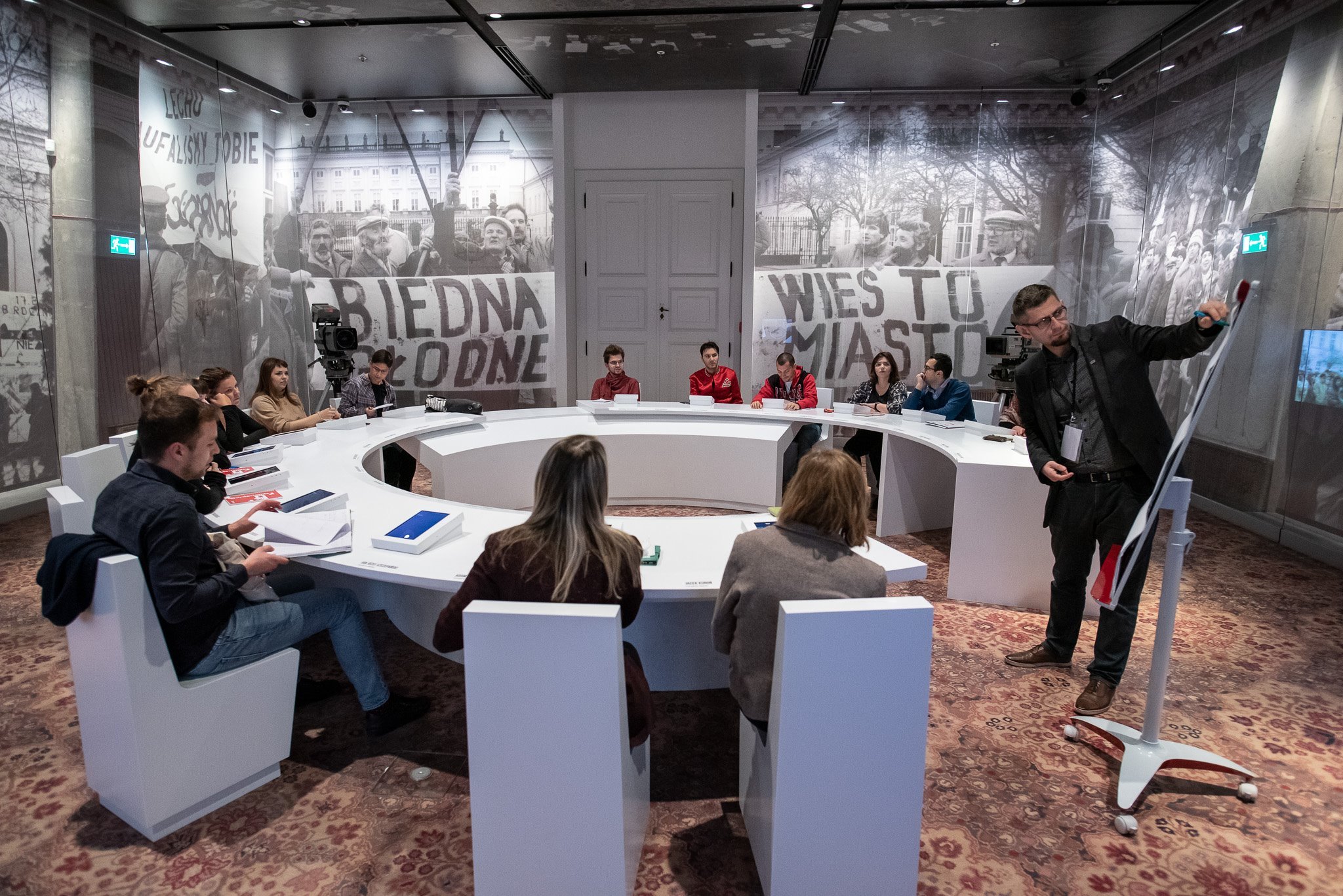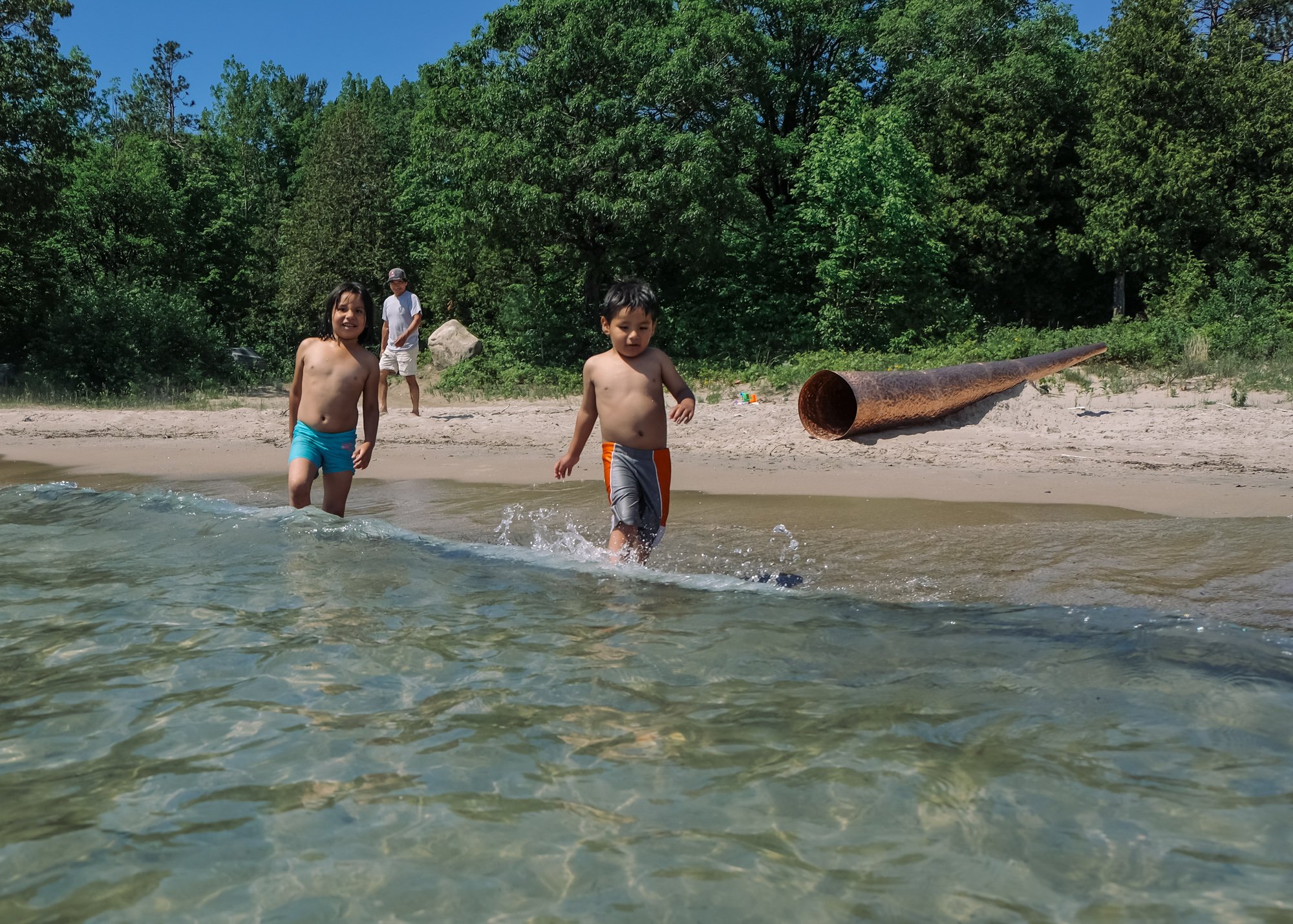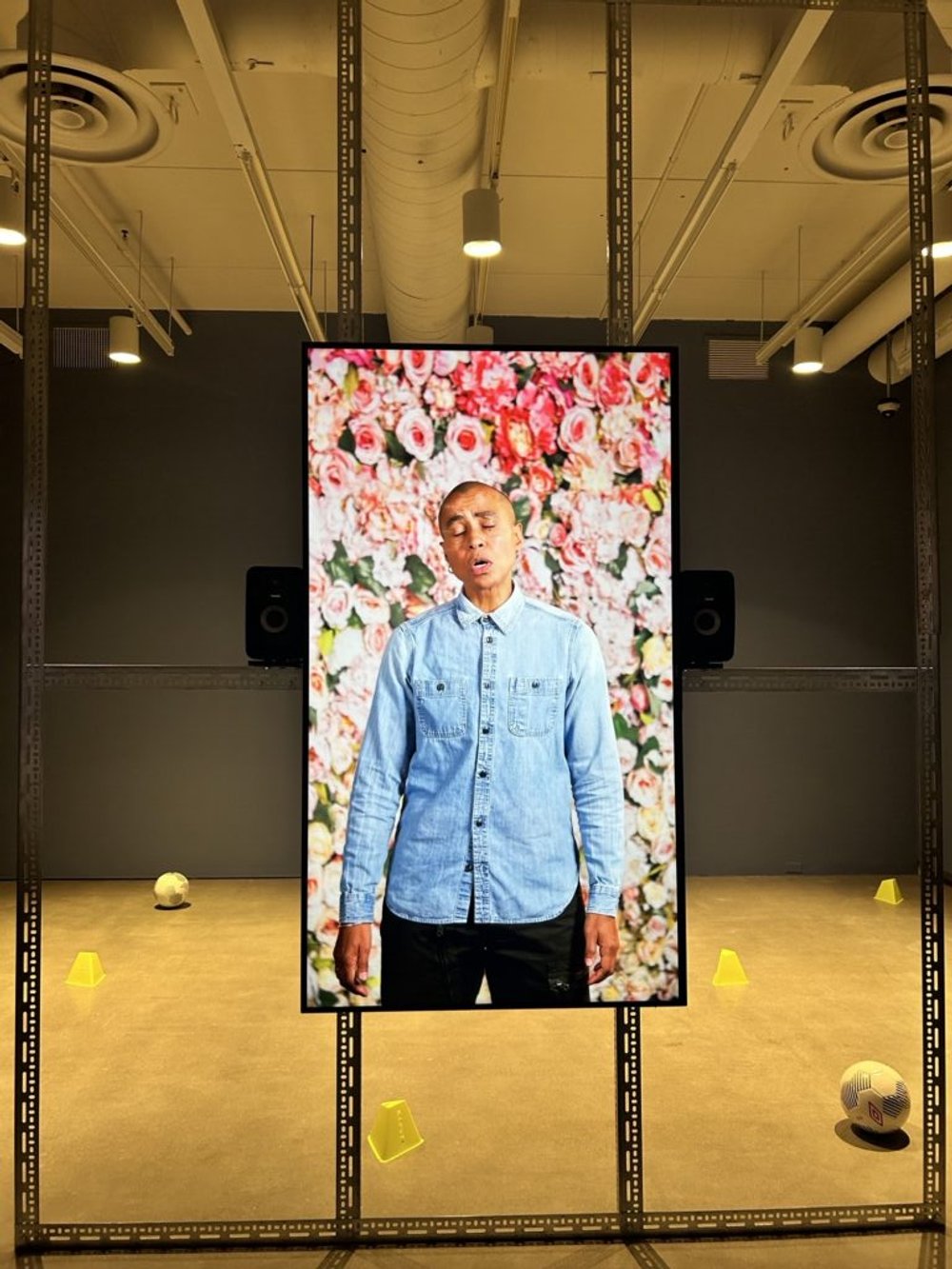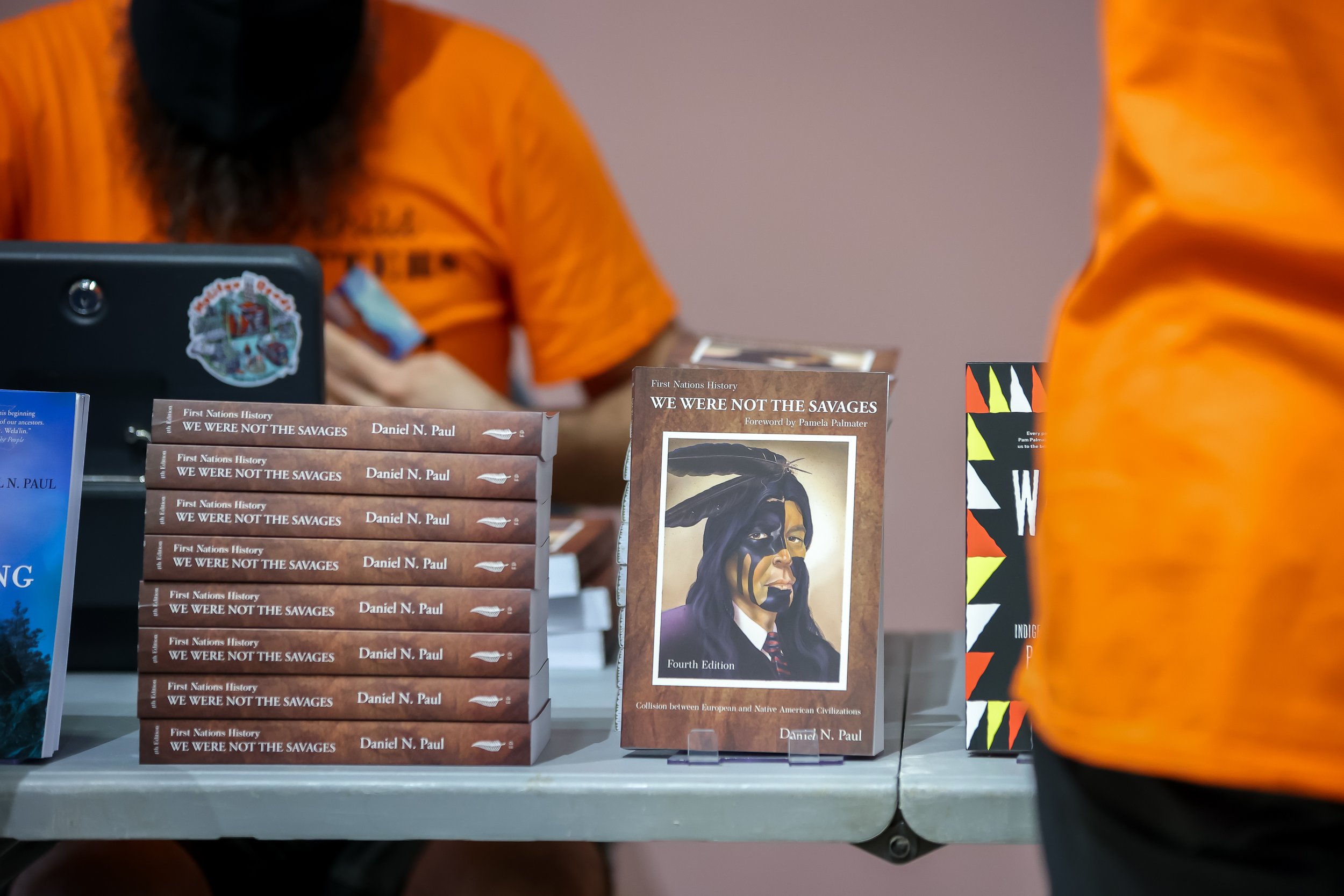TTTM Year 4 Annual Gathering: Intersections in Critical Curating
BY KEISHA CUFFIE (Affiliate - Children’s Museology Cluster)
April 7, 2025
From October 19th to 22nd, 2024, the Thinking Through the Museum (TTTM) team gathered on unceded Anishnaabek Omàmiwininìwag (Anishinaabe-Algonquin) territory, also known as Ottawa, Ontario. Hosted by the Children’s Museology Cluster, the Annual Gathering*, themed Intersections in Critical Curating, brought together members and collaborators at Carleton University, the Canadian Museum of History, and the Ottawa Art Gallery (OAG). Over four days of vibrant discussion, exhibition tours, and workshops, participants explored themes of decolonization, intergenerational engagement, and radical inclusivity in museum spaces. The gathering opened with an informal meet-and-greet at the Alt Hotel Lounge, fostering a warm and inclusive environment for new and returning members.
*Organizers of the 2024 Annual Gathering developed an Action Plan to encourage the group to embrace the notion of community care and to reject black-and-white thinking regarding COVID-19 risk mitigation. Click here to learn more.
TTTM Annual Gathering - Day 1
Everyone was excited as participants convened at the Ottawa Art Gallery for a guided tour of Stories my father couldn’t tell me: Jeff Thomas’ Origin with curator Dr. Rachelle Dickenson. This exhibition delved into the urban-Iroquois photographer’s decades-long practice of challenging colonial narratives through critical and creative visual storytelling. Key works like Dream Panels showcased his sustained cross-examination of Indigenous masculinity, fatherhood, and relationships with the land.
The afternoon’s session featured artist, educator, and museum consultant Dr. Cara Tierney, whose 18-foot sculpture they challenges binary gender norms while creating an inclusive space for all in the gallery and the café below. Cara’s discussion highlighted their ongoing work in The Decommissioned Project, described as “a collaborative socially-engaged community project designed to make public and private spaces, and washrooms, more accessible”. Showcasing the changes that the OAG implemented through their participation in this project, Cara invited participants to explore the new all-gender washrooms and told us about the programming and consultation process behind them. By centering lived experiences of trans and non-binary individuals, Dr. Tierney reframed mundane spaces, often taken for granted by those whose gender is generally acknowledged and accepted, as sites of resistance, illustrating how radical shifts in design can facilitate equity and belonging.
In the afternoon, a panel on Decolonization was moderated by Dr. Heather Igloliorte (TTTM Co-Investigator), a Nunatsiavummiuk-Newfoundlander and a leading curator and scholar of Indigenous art, museology, and curatorial studies. Her opening question—What does it mean to decolonize museums?—set the tone for an engaging and thought-provoking dialogue.
Sandra Bruku highlighted her work at the National Museum Gallery in Accra, Ghana, where community-centered programs bridge gaps between museum spaces and schools.
Heba Burqan emphasized co-design as a decolonial curatorial strategy in Palestine, advocating for collaboration to amplify marginalized voices to counter colonial erasures.
Keisha Cuffie addressed the importance of inclusive educational programs and Black history exhibits in disrupting settler narratives in living museums and heritage spaces.
Dr. Amy Fung critiqued performative approaches to historical injustices, urging systemic changes to authentically engage marginalized communities.
Dr. Michelle McGeough closed the panel by reflecting on how two-spirit perspectives challenge colonial and heteronormative frameworks in museum practices.
The first day concluded with an Indigenous Walks tour through downtown Ottawa, led by Cree-Métis Jaime Morse. Participants explored Algonquin Anishinaabe culture through stops at public sites such as Chickadee Calls in Confederation Park, an artwork installation by artists Mairi and Claire Brascoupé inviting reflection on the natural world. We also stopped for conversation and reflection at the National Aboriginal Veterans Monument, sculpted by Lloyd Pinay of the Peepeekisis First Nation, which honors Indigenous veterans through the symbolism of warriors, spirit animals, the Creator’s eagle, and the duality of war and peace. This immersive tour emphasized the importance of Indigenous voices in understanding and honouring the land and our shared history.
TTTM Annual Gathering - Day 2
The next day we were hosted at the Canadian Museum of History in Gatineau, Quebec. The day began with a brief dialogue among members before a detailed presentation by John Moses, member of the Delaware and Upper Mohawk bands from the Six Nations of the Grand River Territory near Brantford, Ontario, Canada and son, grandson, and great grandson of residential school survivors, about his role as the Director for Repatriation and Indigenous Relations at the CMH and the museum’s history of repatriation and rematriation of Indigenous belongings from their collection.
Next, Sonya Gray, a Tlingit CMH curator of Indigenous Histories and Contemporary Cultures, North led us to view the newly installed Residential School Monument: Bringing Their Spirits Home created by Kwaguʼł master carver Stanley C. Hunt. Gray shared with us her reflections on the meanings of the pole, the long journey it took to arrive, and the opening ceremony that welcomed the pole and offered an opportunity to grieve. Hunt, a Sixties Scoop survivor along with some of his siblings, was inspired to create the memorial pole after learning about the unmarked graves. His parents and two siblings attended the residential school at Alert Bay, B.C. He stated, “…this sculpture that took a lot of effort and a lot of emotion to complete...” The pole stands 18 feet tall and 4 feet wide, featuring a 2-meter raven holding the seed of life in its mouth, which Hunt explains symbolizes guiding the children’s spirits’ home.
After a delicious lunch catered by Mādahòkì Farm, a roundtable titled Curatorial Perspectives: Listening to Local High School Students, moderated by Dr. Monica Eileen Patterson and Rebecca Friend featured three students from their mini course for grade 8-10 students, Curate Your World: Intro to Curating. We heard first-hand how student participants curated their mini exhibition, Making Climate Change, during a week-long camp at Carleton University. The students’ perspectives challenged conventional museum practices and emphasized the need for museums to listen more to young people, whose innovative suggestions reflect priorities and interests that adults often overlook.
Next, we experienced a delightful mini workshop titled, Museum! Please Listen to Us! By Fulbright scholar Chun-Hui Wang, a museum practitioner who discussed her work developing child-friendly spaces in museums in Taiwan. Hui shared children’s snacks from her home in Taiwan and invited participants to consider the feelings, ideas, and associations that come to mind when examining the images of children on the packaging. This is an exercise she often begins with in her workshops with children, where her main goals are to encourage children to think, speak, and creatively express themselves and for museums to treat them respectfully.
In a brief tour led by Dr. James Trepanier, CMH Curator of Youth and Social Movements, participants explored representations of children and youth featured within the Canadian History Hall’s Modern Canada gallery. James highlighted two poignant examples: installations about Indigenous youth activist Autumn Peltier and art created by students at the Alberni Indian Residential School in the late 1950s and 1960s. After the tour, TTTM participants engaged in a new school program centered on the Alberni Indian Residential School art collection and the museum’s ongoing engagement with the Survivors who produced these works. The session included an introductory video, an invitation to reflect on one of the art pieces in small groups without prior context, an opportunity to learn more about the specific work, and a chance to create our own collective and individual art works. The workshop fostered deep introspection, as some pieces conveyed clear messages while others expressed abstract emotions, challenging us to grapple with the profound pain and resilience behind these works created by young children. This session underscored the power of art as a medium for reflection, storytelling, and honoring the voices of Survivors.
TTTM Annual Gathering - Day 3
We met at the Carleton University Art Gallery (CUAG) for a tour of TTTM Collaborator Dr. Andrea Fatona’s exhibition, Practice as Ritual/Ritual as Practice. The exhibit features the work of ten Black women artists who participated in Black Wimmin: When and Where We Enter (1989), which was the first nationally touring exhibition to address the exclusion of Black women artists from the visual landscape of Canada. TTTM Collaborator and Art History professor Dr. Alice Ming Wai Jim led us on a tour, providing historical context on the groundbreaking 1989 exhibition and sharing Andrea’s own words in her absence. The exhibit included work on women’s knowledge, anti-Black racism, spirituality, kin, and liberation, among other themes, for example exploring Black women’s connection and solidarity through the art of hair braiding. Alice offered her reflections on the exhibition’s legacy, highlighting its role in challenging exclusion and shaping narratives in Canadian art.
Following this tour, the group engaged with another exhibition at CUAG, A Dream of Return, curated by Dr. Pansee Atta. Featuring contemporary art works that “weav[e] together difficult pasts and hopeful futures through creative resistance in the present,” as described in her curatorial statement, the exhibition examines “the theme of ‘return’: of land, objects, cultural practices, and human communities.” We were honored to meet with two of the artists with work in the exhibition, Rana Nazzal Hamadeh and Farouk Kaspaules, who shared their personal reflections on what return means to them and their displaced communities of Palestinians and Iraqis. Following an open dialogue with Rana and Farouk, we were able to connect with Pansee via Zoom for continued discussion.
To close out the day, participants attended a hybrid panel titled, “Museum Statements, Open Letters, and Institutional Critique in Times of Polycrisis,” chaired by TTTM members Varda Nisar and Dr. Shelley Ruth Butler.
Juline Chevalier analyzed museum solidarity statements from the summer of 2020, examining their language, themes, and responsiveness to systemic racism and calls for justice, highlighting patterns and inconsistencies in institutional commitments.
Dorota Glowacka analyzed the United States Holocaust Memorial Museum’s (USHMM) statements, focusing on their language, themes, and ethical challenges in addressing contemporary issues and historical memory.
Lynn Kodeih discussed the Index Palestine project, examining the role and significance of public statements in addressing political and cultural narratives related to Palestine.
Wayne Modest’s work “(When) Is Silence Ever An Option? Or If We Do It For One We Have To Do It For All,” explored narratives as a form of critique, examining the ethical implications of silence and selective storytelling in institutional and cultural contexts.
Monica Eileen Patterson focused on children’s museum statements issued in response to crises and conflict, analyzing how these institutions addressed sensitive topics and their role in shaping narratives for young audiences.
Ciraj Rassool analyzed museum statements addressing shameful xenophobic violence in South Africa, focusing on the responses of The District Six Museum and Lwandle Migrant Labour Museum and their efforts to confront and contextualize such violence through their narratives.
Naveed L. Salek Nejad explored the dynamics of censorship, protest, and resistance within a 'Field of Tension,' highlighting how these forces intersect and shape cultural and institutional responses to power and conflict.
Reagan Swanson reviewed The Historical Inequities Statement at The ArQuives, reflecting on the changes implemented over four years, assessing progress made, and identifying areas where past practices have reverted.
TTTM Annual Gathering - Day 4
In the morning, TTTM’s Emerging Scholars and Practitioners Committee (ESPC) members held a roundtable moderated by Rebecca Friend, ESPC Representative and PhD candidate in Public History at Carleton University, where they shared reflections on “emergence” in relation to notions of hierarchy, power, and knowledge. The discussion included frank conversations about mentorship, support for emerging scholars, and presenters’ own experiences of and areas for growth.
Emily Keenlyside explored the concept of emergence through the lens of a mid-career museum worker returning to academia, challenging the traditional notion of emergence tied to early careers and proposed ways to challenge power dynamics for a more inclusive future.
Hugo Rueda’s “Too Late to Emerge Young” reflected on personal experiences to examine how age influences scholarly emergence, exploring the complex and sometimes contradictory meanings of being an “emergent scholar.”
Chaoyang Zhang focused on the concept of ‘Modernology’ while introducing “Mini Qrator,” a board game which engages young people in curating their personal memories and philosophies, emphasizing that individual lives and personal histories are as valuable as national narratives.
Yazhe Zhang highlighted a unique exhibition which voiced children’s critiques and reflections in schools, highlighting growth between students and teachers that can inform collaborative future teaching approaches.
Alex Robichaud discussed “emergence” from the perspective of a versatile museum professional with 15 years’ experience, highlighting dynamics observed through their role as TTTM’s project coordinator working with both early career and established professionals.
Varda Nisar reflected on her non-academic work, shaped by her role as a mother, which raised ethical responsibilities and dilemmas amid political tensions and polarization.
Karina Roman Justo focused on emergence as a continuous state, reflecting on non-linear careers, migration stories, and experimental methods, sharing her work with Mending the Museum as a type of emergence.
The TTTM Year 4 annual gathering reinforced the importance of curating with intention, equity, critical reflection, and the transformative potential of community-driven approaches. Through vibrant discussions, workshops, exhibitions, and collaborations, participants affirmed the power of coming together to critically engage and envision a future that transforms museums into spaces of learning, healing, empowerment, and belonging.
















































